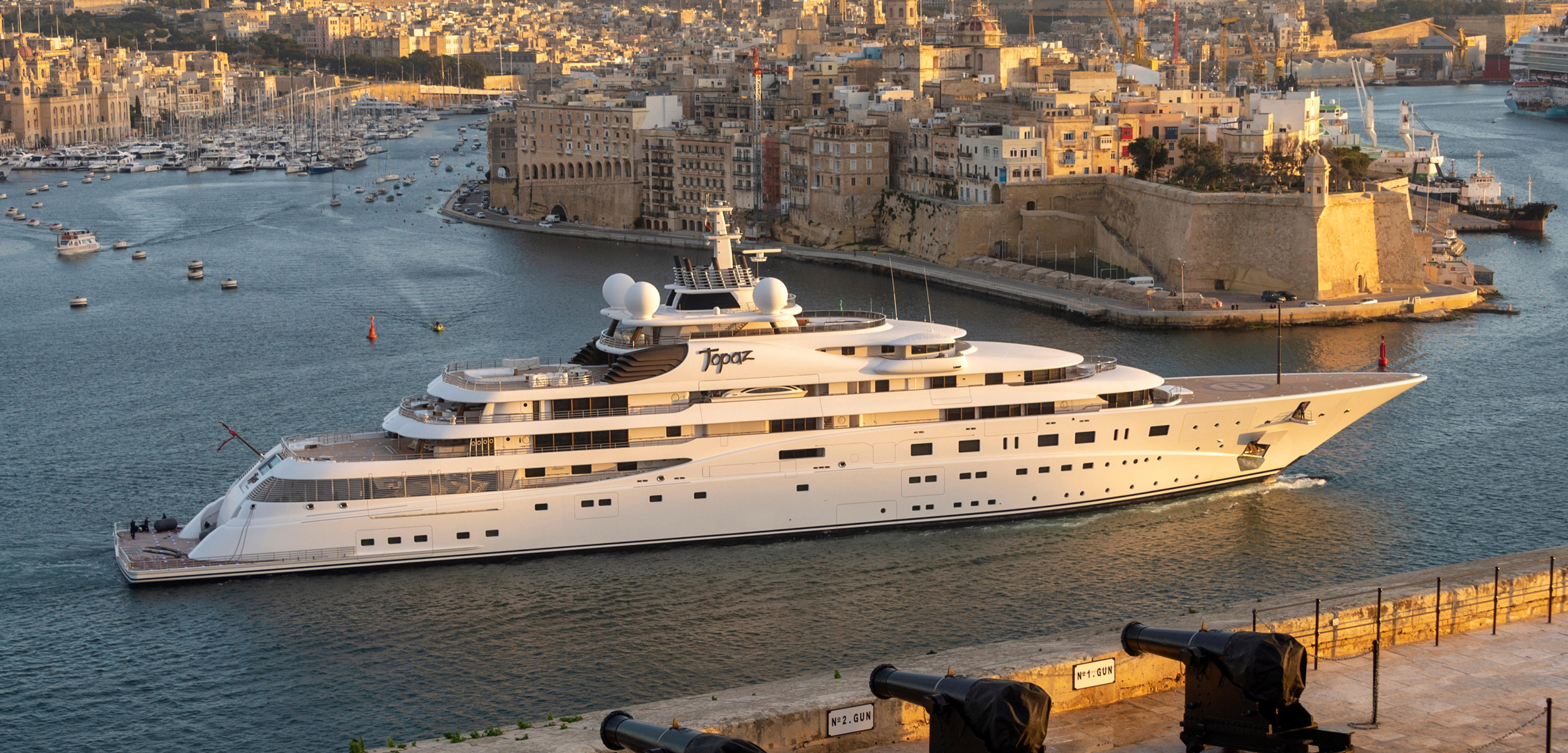In the Mediterranean, Megayachts Do Megadamage
From anchors to engines, large private yachts can leave problems in their wakes.
Article body copy
On any balmy summer afternoon, the Gulf of Saint-Tropez in the French Riviera is a hotspot for yachters, and this summer day in 2019 is no exception. A private megayacht angles toward the shore, gentle waves lapping at its hull. On this day alone, more than 350 private yachts bob in the crowded Gulf—100 of which are considered megayachts, often-opulent ships that stretch more than 24 meters from bow to stern. When its captain decides on a spot to pause, the boat drops a massive anchor into the sea, crushing the Neptune seagrass growing on the ocean floor.
Today, nearly 10 percent of the recreational boats in the Mediterranean are megayachts. They are the fastest-growing segment of the boating industry and their prevalence has boomed with the global pandemic.
Whether privately owned or chartered, megayachts can leave outsized environmental damage in their wakes. In a new paper, Arnau Carreño and Josep Lloret, both researchers at the University of Girona in Spain, explore the extent of this damage, and offer ways governments can mitigate it through regulation. Yet regulating megayachts, they add, could be a difficult political battle. Nautical tourism in the European Union generates US $32-billion in revenue annually and supports more than 230,000 jobs. Port cities often invest millions in infrastructure in the hopes of attracting yacht owners and their spending.
While boats of all kinds have some sort of environmental effect, the damage caused by megayachts is magnified by their size and sailing patterns. Other large ships, such as ferries or fishing vessels, tend to stick to open water routes, while megayachts are often operated like smaller recreational boats and remain close to shore for prime sightseeing and easy access to supplies.
These often shallow and rocky waters used to be inaccessible to large yachts, but new technologies have changed where they can venture. Consider the Cap de Creus, a marine protected area in Spain, says Lloret. “Ten years ago, there were no megayachts. Now there are. They have opened new waters.”
The damage that megayachts can cause comes in many forms. Megayachts’ enormous anchors can destroy Neptune seagrass close to shore, which serves an essential function in the ecosystem by cycling carbon and producing oxygen, maintaining balance for other species. An already vulnerable ecosystem, Neptune seagrass habitat has shrunk 34 percent over the past 50 years from a host of causes, including ship anchors, ocean acidification, and trawling.
Megayachts’ large engines create noise that can harm marine organisms from seagrasses to fishes. The boats also bring along heavy metals such as zinc and copper in their paints that can have drastic effects on fish populations, and find their way into seafood. Tests show that the heavy metals shed by these yachts during peak tourist season rival those of commercial fishing vessels.
Catherine Piante, with the Mediterranean Marine Initiative at World Wide Fund for Nature, France, agrees that habitat destruction from recreational boating is a growing issue. “The sector has become a real threat to marine biodiversity and habitat conservation,” she says. “These habitats do not regenerate easily when damaged.”
Lloret says that the European Union’s boating regulations have failed to keep up with the rapid growth of the megayacht industry. Laws were designed around a bygone era of small recreational boats, he says, and don’t do enough to combat the effects of larger craft. “Governments need to react quickly, and they are not doing so,” he says.
Lloret and Carreño have specific policy recommendations that they think could help mitigate the damage, including the use of more environmentally sound moorings, which are designed to minimize contact with the ocean floor through flexible cables and small anchors rather than chains and concrete beds. But they say the most impactful measure would be to simply ban megayachts from entering certain areas. Piante agrees. “Large yachts should be completely forbidden inside small marine protected areas, and strictly regulated in larger ones,” she says.
While he’s optimistic, Lloret says political pressure is needed to give marine ecosystems any real protection against the megayacht industry. “I think we can reverse the situation, but administrations will only react when they are lobbied.”

